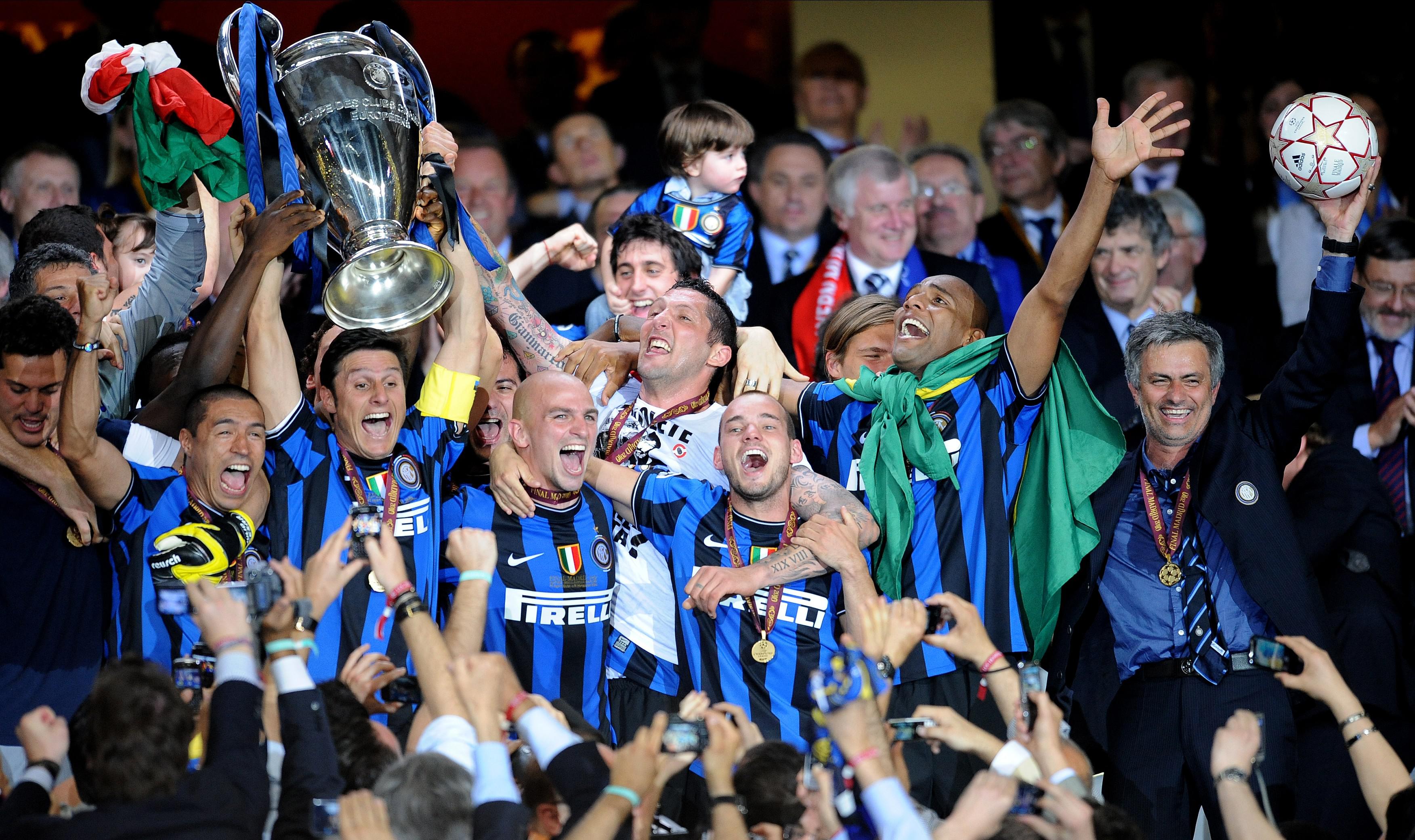High lines, tired legs and Messi: Where the World Cup Final will be won and lost
Michael Cox explains the tactical ins and outs of Sunday's showdown between Germany and Argentina...
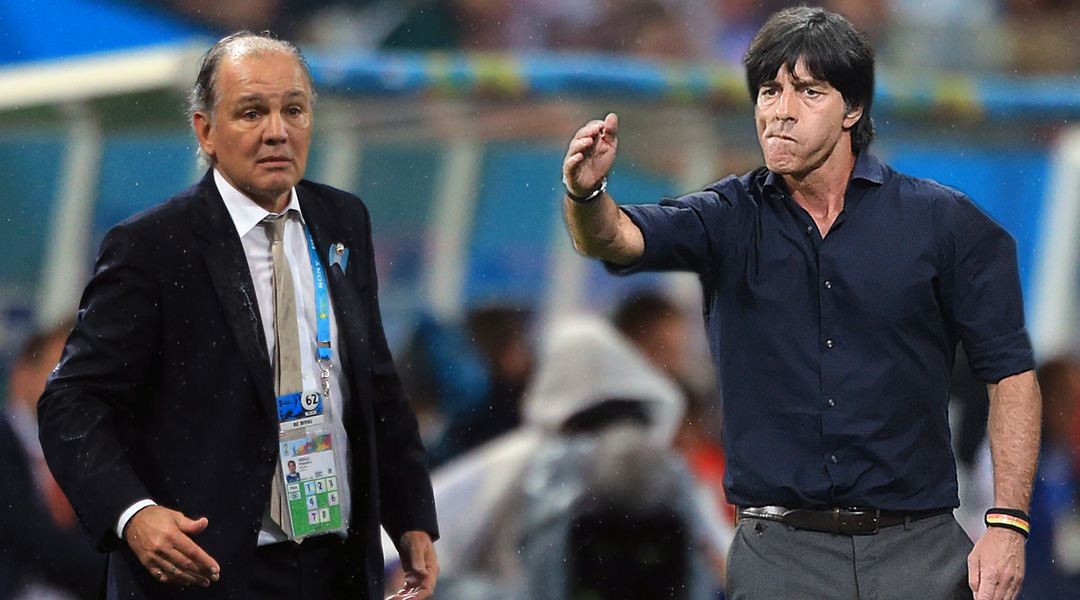
This will be Germany and Argentina’s third meeting in the World Cup final, and promises to be an exciting clash between the best team, and the team with the best individual. Here are five crucial areas of the game…
Germany’s right flank against Argentina’s left
Brazil’s incredibly poor performance in the 7-1 thrashing against Germany can’t be put down to one solitary factor, but the biggest problem throughout their disastrous first half hour was in their left-back position. Marcelo kept sprinting forward, Thomas Muller kept charging into the space he was leaving, and German continually created chances from that zone.
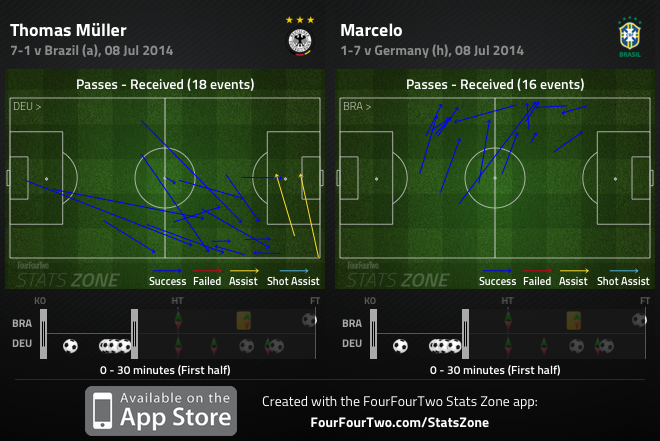
Muller has drifted inside to become a second striker alongside Miroslav Klose throughout this tournament, and has sometimes neglected his defensive responsibilities, allowing the opposition left-back forward. So the question for Argentine left-back Marcos Rojo is simple – should he stay, or should he go? Keep his position, or push forward and attack? His performance against the Netherlands this week was very different from his display against Iran, for example.
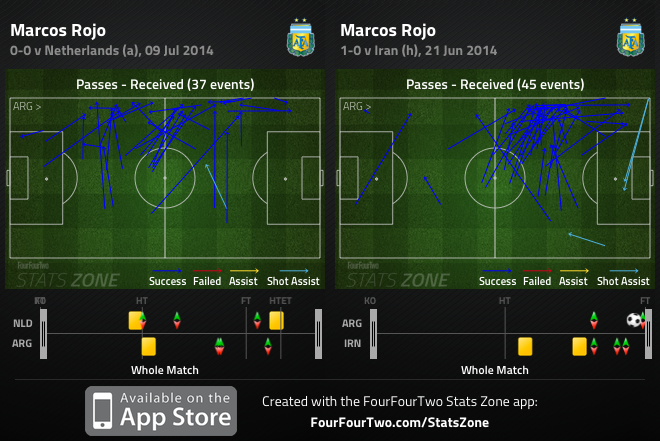
The situation is complicated by the fact Germany are even more dangerous down their right since Philipp Lahm’s return to his best position of full-back. He can push forward and create overloads, and Germany could prosper down that flank.
Germany’s high defensive line
Germany’s use of an aggressive defensive line has been obvious throughout the knockout stage.
Get FourFourTwo Newsletter
The best features, fun and footballing quizzes, straight to your inbox every week.
The most nervous moments came in the second round, when Algeria continually attempted to knock the ball in behind Per Mertesacker into inside-left positions, which prompted Manuel Neuer to come sprinting out of his goal repeatedly, making a couple of well-judged but slightly nervous last-ditch tackles.

Against France the situation was less extreme, but France’s best opportunities again came when playing long balls in behind, often from Paul Pogba to Antoine Griezmann or Karim Benzema in left-sided positions. And while Brazil hardly threatened in their 7-1 loss, David Luiz hit some excellent early diagonals balls out to Bernard and Hulk, again breaking into Germany’s right-back zone.
Ezequiel Lavezzi will pose a threat with his pace, but Gonzalo Higuain could be dangerous too. It’s worth remembering that Higuain turned in a brilliant performance against German opposition in the Champions League last season, when he surprised Mats Hummels with his pace in behind the Dortmund defence, constantly reaching through-balls and getting Roman Weidenfeller sent off.
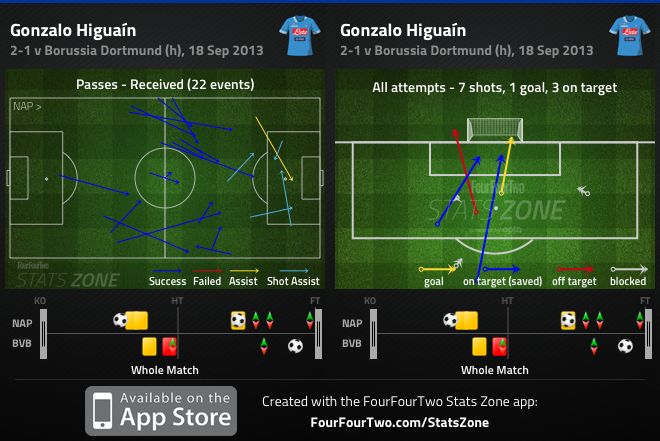
Neuer is a much better sweeper-keeper, but this could be a problem for Argentina. Javier Mascherano’s passing, in particular, has been surprisingly impressive in this tournament and could create chances.
Set-pieces
Germany demolished Argentina 4-0 in the World Cup 2010 quarter-final, but they were given license to counter-attack having taken the lead with Muller poking in from a set-piece. Something similar happened in the 7-1 thrashing of Brazil: Muller converting a corner at the far post, in a similar way to how Hummels headed in against Portugal on the fifth day of this tournament.
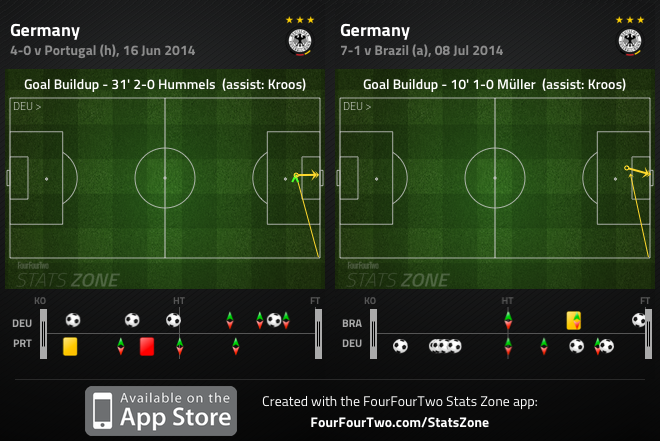
Germany’s technical quality is highly impressive, but they remain very efficient at the unfashionable aspects of the game too.
But Argentina have set-piece threats too – Martin Demichelis, Ezequiel Garay and Marcos Rojo are all dangerous in the air, as is Gonzalo Higuain. With the exception of that famous 7-1, the knockout stages of this competition have been very tight, and set-pieces have played a huge role – the same could happen here.
Pressing and tiredness
The two sides’ midfield approach in the semi-finals was completely different – Germany pressed high in midfield, winning the ball quickly and launching immediate attacks. Argentina, on the other hand, allowed the opposition time in deep positions before closing down once the ball was played over the halfway line. Compare the recovery positions of Sami Khedira and Lucas Biglia:
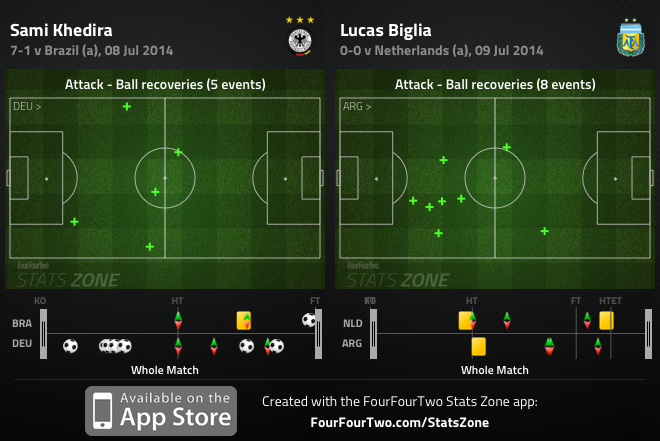
Expect the same thing again, partly because of tactics, but also because of fitness. Whereas Argentina played 120 hard-fought minutes on Wednesday, Germany had 24 hours extra rest, and had effectively stopped playing after half an hour of their win over Brazil.
Germany will be significantly more mobile and energetic, and that could prove crucial.
How to stop Messi?
Lionel Messi’s opponents in this competition have attempted to get numbers around him quickly, with Switzerland particularly keen to double-mark him with both Gokhan Inler and Valon Behrami. The approach has been simple – if you stop Messi, you effectively stop Argentina.
However, if Germany play their usual system, they won’t always have midfield numbers in a position to shut him down. Bastian Schweinsteiger has played at the base of the midfield trio, with Toni Kroos and Sami Khedira both pressing higher up. Schweinsteiger’s defensive contribution has been impressive so far, but he’ll need more support.
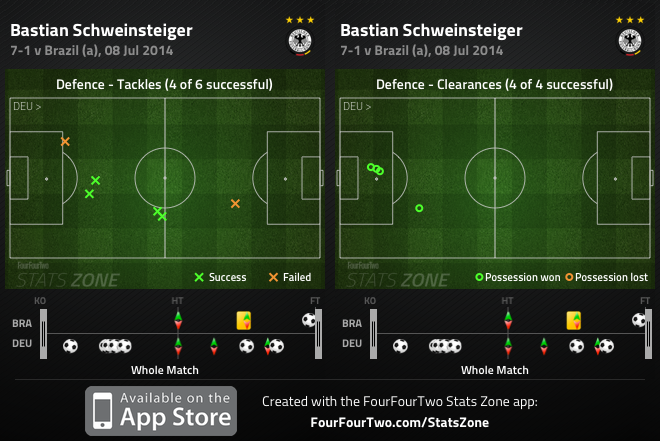
It’s arguable that Germany don’t need to press quite so high against this Argentina midfield, and Khedira would be better off dropping back and helping Schweinsteiger track Messi, leaving Kroos to dictate play in a more advanced position.
Messi will also look to drift to the right flank, as he did successfully against the Dutch on Wednesday, and could take advantage of Benedikt Howedes' seeming discomfort at left-back.
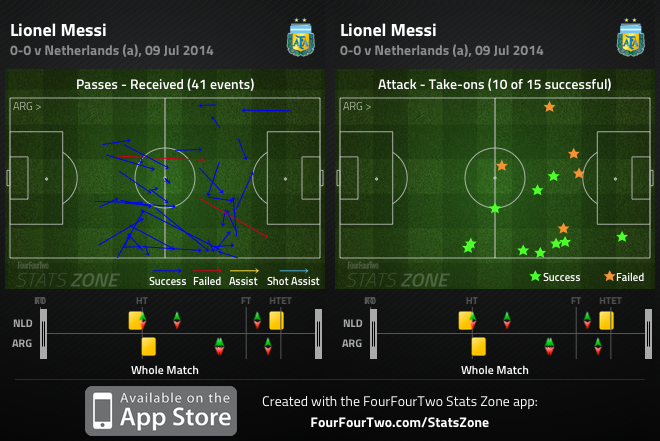
This, in truth, is the game’s major question – the world’s greatest player on the world’s greatest stage. Can Messi seize his moment?
